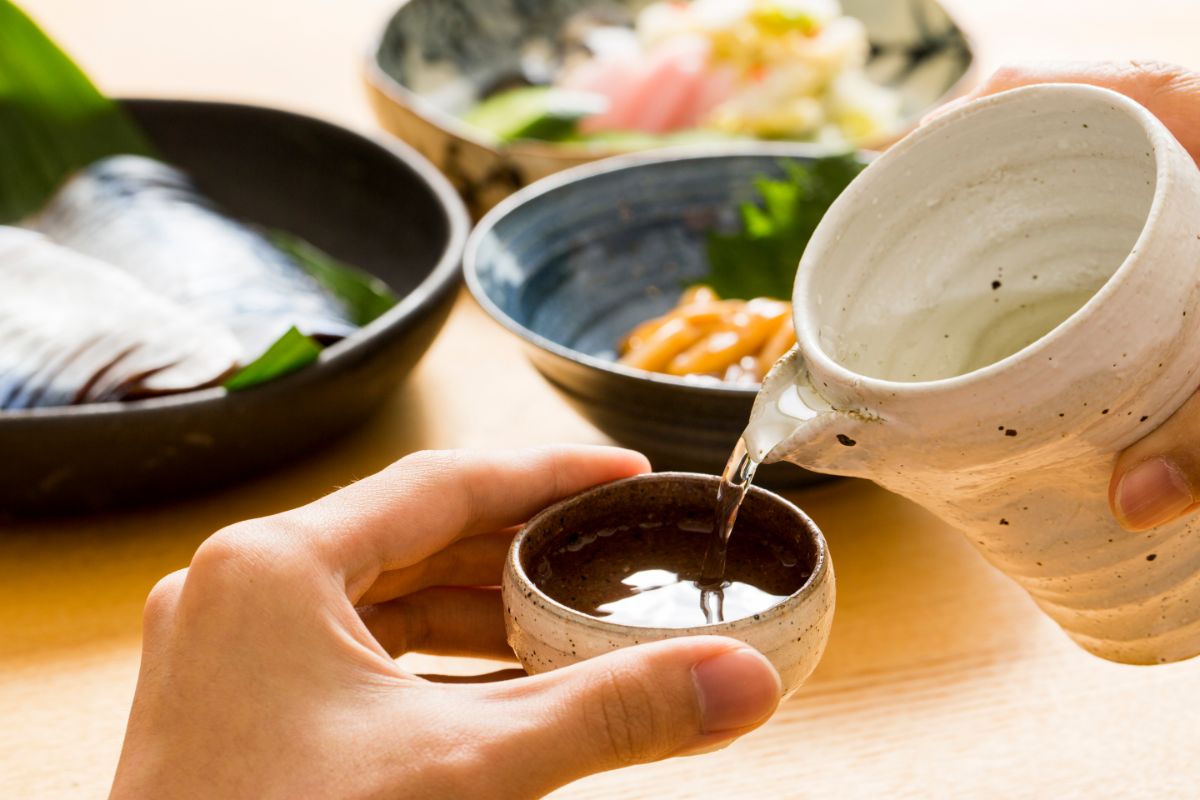Depending on the temperature of the Japanese sake, it has a different flavor. The versatility of the alcoholic beverage means that with every 5 degrees of temperature change, it will have its own individual taste.
While you might be accustomed to drinking it cold, did you know that you can also consume it hot, too? Traditionally, sake is put into a tokkuri and then left in some hot water, however, there are some easier or more fun ways to drink hot sake.

In this article we shall take a look at how to heat sake, so let’s get to it!
Why Heat Sake?
You might find that if you order a glass of sake it is served at a chilled temperature, rather than hot. This isn’t unusual, as the type you are likely drinking is premium. With that being said, always start by heating a less expensive sake so you can experiment with flavor.
So, why heat sake? Not only is warm sake delicious during the winter season, but it also brings out other flavor dimensions.
When you heat sake, the alcohol will begin to vaporize. Not only that, any ingredients that have been added to create flavor will also vaporize, causing these to become more prominent when you taste the sake.
While it doesn’t affect any of the bitter notes, those that are sweet are affected making them even more obvious.
So to make use of this flavor change, find a sake with a high acid content because both the sweet and acid notes can be evenly balanced to create a delicious drink.
You might also find that once you heat sake it tastes dryer, compared to when it is chilled. Not only that, the alcohol is increased when heated, so do be aware of this if you have other things to do the day you decide to warm up some sake.
Picking the Correct Temperature for Hot Sake
When picking the right temperature it all comes down to preference. However, there are a few standard temperatures when it comes to heat sake – or leaving it cold.
However, you might want to think about whether you are serving the sake with a meal. You might want to think about serving hot sake with a warm meal, and a colder sake with a cold meal.
Sake Temperature Names
Here are the different temperature names when it comes to ordering sake from hot to cold:
- 140 Fahrenheit – Superb Hot
- 122 Fahrenheit – Hot
- 113 Fahrenheit – Warmer
- 104 Fahrenheit – Warm
- 95 Fahrenheit – Skin Warm
- 86 Fahrenheit – Sunny Warm
- 68 Fahrenheit – Room Temperature
- 59 Fahrenheit – Cool
- 50 Fahrenheit – Flower Cold
- 41 Fahrenheit – Snow Cold
Quick Blitz – Warming Up Sake Using a Microwave
Whilst not a traditional way, it is a quick way to warm up sake if you are short on time. However, it isn’t the best way of determining a particular temperature. For this reason, it shouldn’t be your go-to way.
Here is how to do it:
Make Sure the Cup is Microwave Safe
Before you put the cup, or traditional tokkuri, into the microwave, make sure it is safe to do so. The last thing you want is it to shatter.
Not only that it can potentially cause the sake to not heat up properly, and instead be uneven – so cold in the middle and hot around the sides, for example.
Don’t Microwave it for Too Long
Once you have put the sake into the microwave, it is time to determine the heat level. What you will want to avoid is overheating and boiling the sake, so aim to only microwave the sake for up to 60 seconds.
The microwave needs to be set on high, and with every 30 seconds it has been in the microwave, remove the sake and make sure to give the liquid a stir to make sure it heats evenly throughout.
Not only that, taking it out of the microwave after every 30 seconds means you can check on the temperature. However, one quick way of seeing the temperature is by looking for bubbles rising. Once you see these, the sake is warm.
If there are bubbles moving quickly to the surface, rather than being slow, then it has become hot.
Step-by-Step: Heating Sake on a Stovetop
Here is a traditional method to heating sake that will give you a more enjoyable experience:
- Put the sake into a decanter, or if you want to be even more traditional, then place it into a tokkuri. Do keep in mind not to fill it too high as sake will expand once it becomes hot.
- Fill a saucepan with enough water to be able to immerse the decanter into the water at least 3 quarters high. Place it onto a stove at a medium-high temperature and wait for the water to start boiling.
- Once it begins to boil, turn the heat off and slowly begin to submerge the decanter into the now hot water. Make sure no water gets inside the decanter.
- Allow it to sit for a couple of minutes, and use a thermometer to ensure it reaches the desired temperature.
- Once you are happy it has reached the temperature you are after, remove the decanter from the water and pour the drink into a traditional glass, such as an ochoko. These are smaller than a tumbler. Also, you must serve the drink immediately to make sure it is consumed at the correct temperature.
Final Thoughts
Sake is an alcoholic beverage which is also known as Japanese rice wine due to it being made from fermented rice which has had the bran removed. Whilst premium sake is usually served chilled, it can also be served warm or hot.
Doing so will change the flavor, bringing out its more sweeter notes, especially if the sake is acidic. To experience the different flavors of sake, you can warm it up at home using two simple methods: the microwave or stovetop.
Hopefully you have enjoyed this article and have learned how to warm up sake!
If you enjoyed this post, you might enjoy our article on ‘What Is Hojicha?‘.
- 16 Best Websites To Watch Japanese Movies With English Subtitles - May 11, 2023
- Is ZIPAIR The Best Airline For Traveling To Japan? - May 11, 2023
- Ryu Murakami Vs Haruki Murakami – Which One Should You Read? - May 11, 2023







